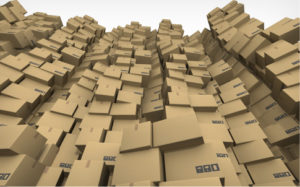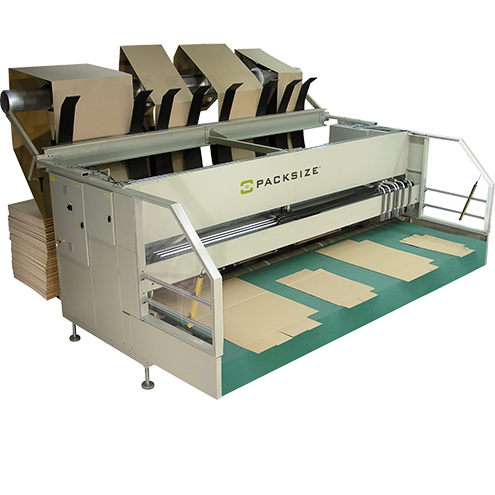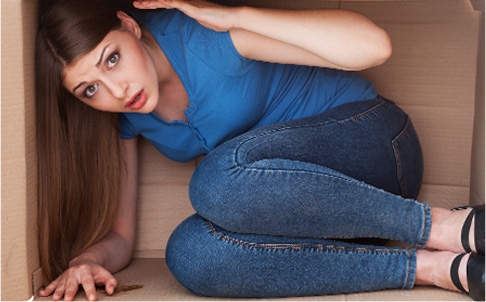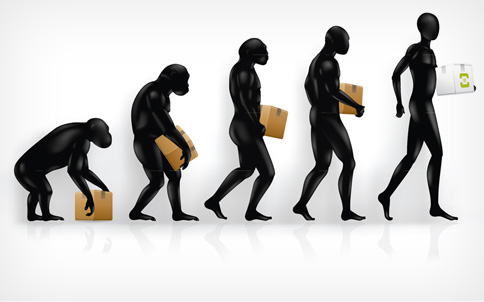Packaging waste is a major concern for consumers and businesses alike.
In large part, that’s because businesses often don’t use the right size box for what they’re shipping out, which requires extra padding materials that create even more waste.
It never would have occurred to me as a business owner to make my own boxes, but our sponsor for this post, Packsize, recommends exactly that. I was so taken with that idea that I wanted to share it with you and give you some solid reasons as to why you should “evolve” and make your own box.
A Big Waste!

That’s because American consumers and businesses generate over 75 million tons of container and packaging waste annually. The waste that’s not recycled ends up in landfills, threatening the environment and human health.
Waste = Pollution
There are numerous issues with landfills, one of the biggest being that they can pollute our air, land, and water.
STYRENE Many of the materials sent to landfills, including plastics and polystyrene foam, contain toxic chemicals.
↓ Polystyrene, like the foam packaging that a lot of electronics come padded in, is non-biodegradable and non-recyclable and takes approximately 500 years to decompose.
↓ High levels of styrene can get released into the atmosphere, affecting our respiratory and central nervous systems and causing environmental problems.
↓ Soil and sediments can also become polluted by the landfill disposal of styrene waste. And, styrene is just one of the many harmful chemicals found in waste materials.
LEACHATES Leachates, the contaminated liquids that drain out as materials decompose, pose more health and environmental threats.
↓ Though landfills contain protective barriers designed to protect us from toxins, they eventually deteriorate, allowing leachates to leak through and enter the soil, groundwater, and waterways.
↓ From there, toxic chemicals can up in our drinking water and even get into our food.
What Can You Do to Make Your Packing
More Eco-Friendly?
As a business, you have a responsibility to be as sustainable as possible. Make your product packaging a priority. Doing so will help your business minimize its environmental footprint, while reducing costs and improving customer loyalty.
Here are some ways you can make your packaging more eco-friendly:
Perform a Sustainability Audit
Are your packaging and shipping operations as sustainable as you think? The only way to know for sure is by performing a sustainability audit.
The auditor will examine your entire packaging process, from production to disposal, and provide specific recommendations on how your sustainability performance could be improved. With an audit, you’ll know exactly what areas need improvements and how they can be achieved.
Use a Box Making Machine to Make Your Own Box

Here’s the problem: Your boxes may be too large for your items because you’re buying your boxes in bulk, in just a few sizes.
Fortunately, box making machines (like the one pictured above) can resolve some of these issues. With a box making machine on-site, you can make the specific sized box you need for the item you’re shipping, right when you need it.
Using the smallest box size possible eliminates wasted space and the need for unnecessary packing material. And, now that dimensional weight pricing is applied to all parcels, a box making machine can help your business save money on shipping costs.
Get Creative with Packing Materials
Your customers care about sustainable packaging. A recent study shows the majority of Americans prefer more environmentally sustainable paper and packaging options; and millennials are willing to pay more for eco-friendly and deforestation-free packaging options.
Many companies are already getting creative with their packaging materials. For instance:
√ Dell uses bamboo and mushroom packaging in place of Styrofoam.
√ Tom’s of Maine is experimenting with using potato starch in its polylactic acid (PLA) packaging. The company is taking food waste and below food-grade crops from landfills and working on turning them into a bio-plastic resin.
√ You can also tinker with the design of your packaging to turn it into something your customers can actually use. Most notably, Puma created the “Clever Little Bag”, a reusable shoe bag, to replace the traditional shoebox.
These are some steps you can take to reduce your business’s packaging waste. For other ways to increase your business’s sustainability, don’t miss:
10 Ways to Become an Eco-Friendly Company
Sources:
U.S. EPA
Sustainable Brands
Sponsor Note: Sponsored posts enable us to bring you important content at no cost to you. Our editorial opinion remains our own.













